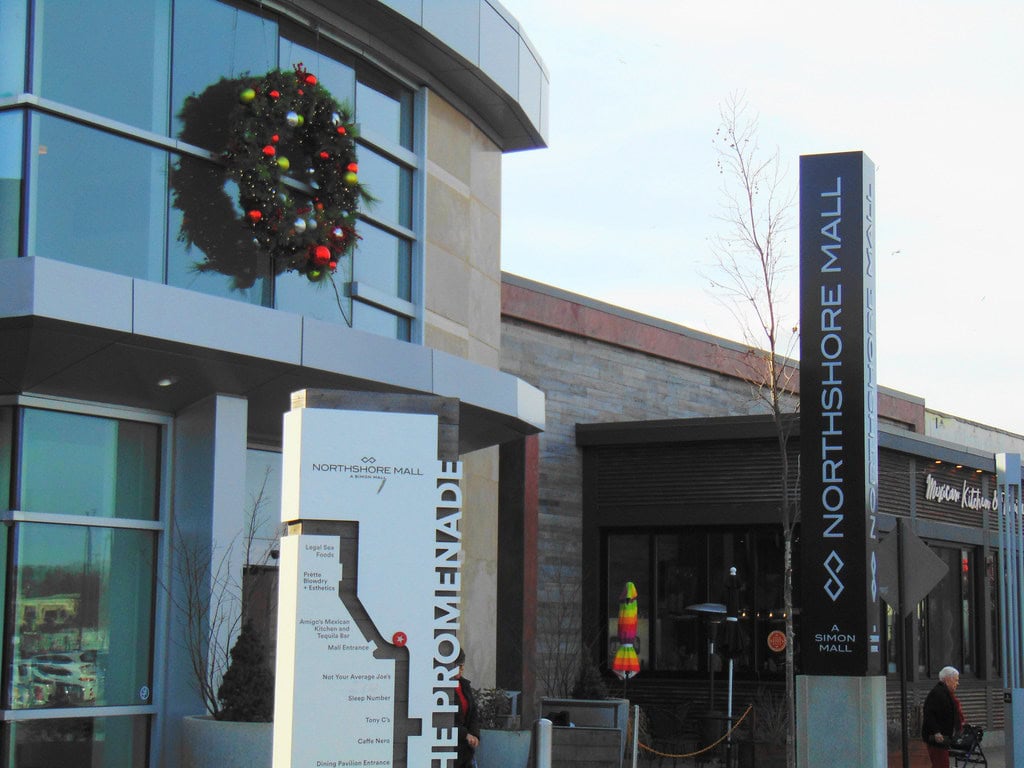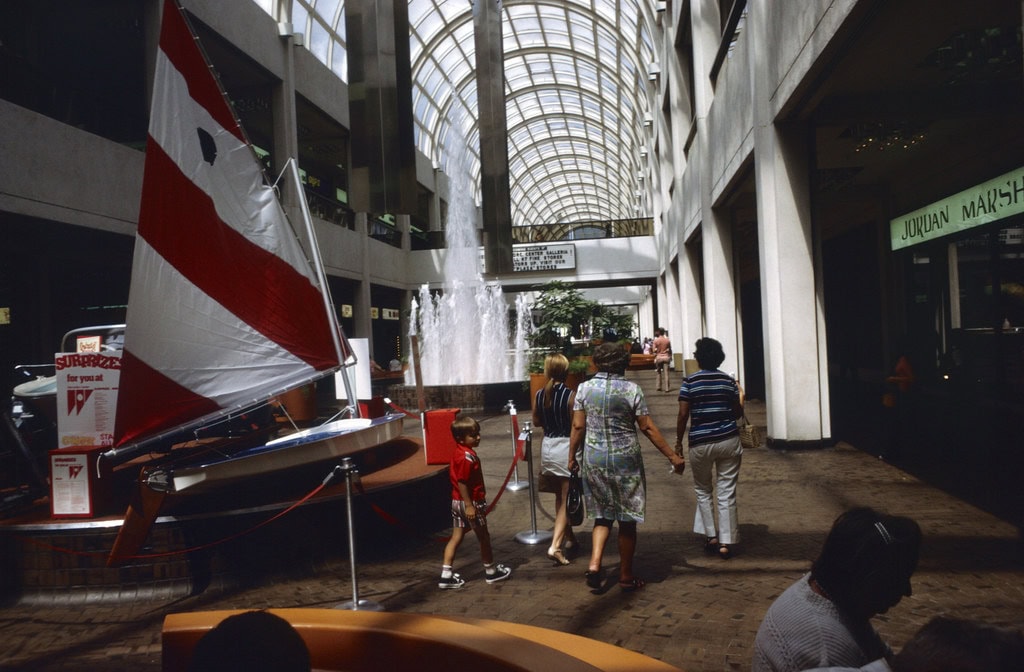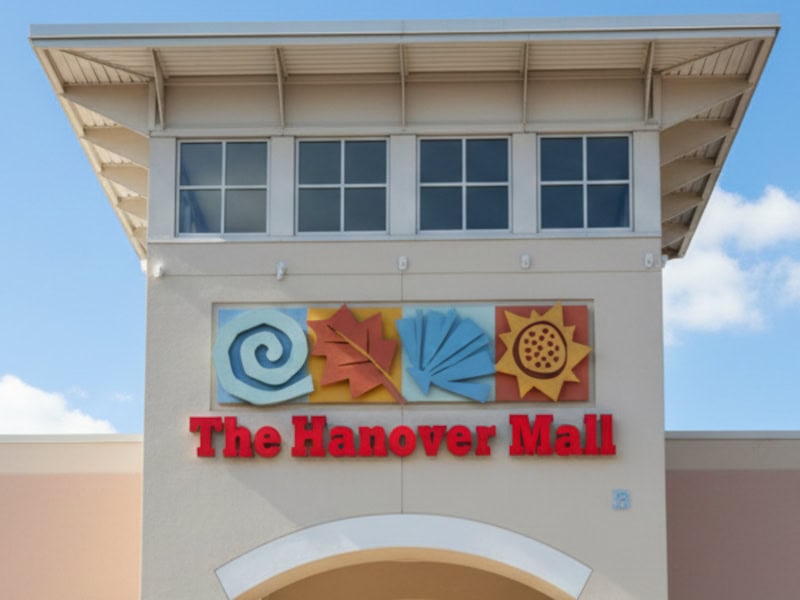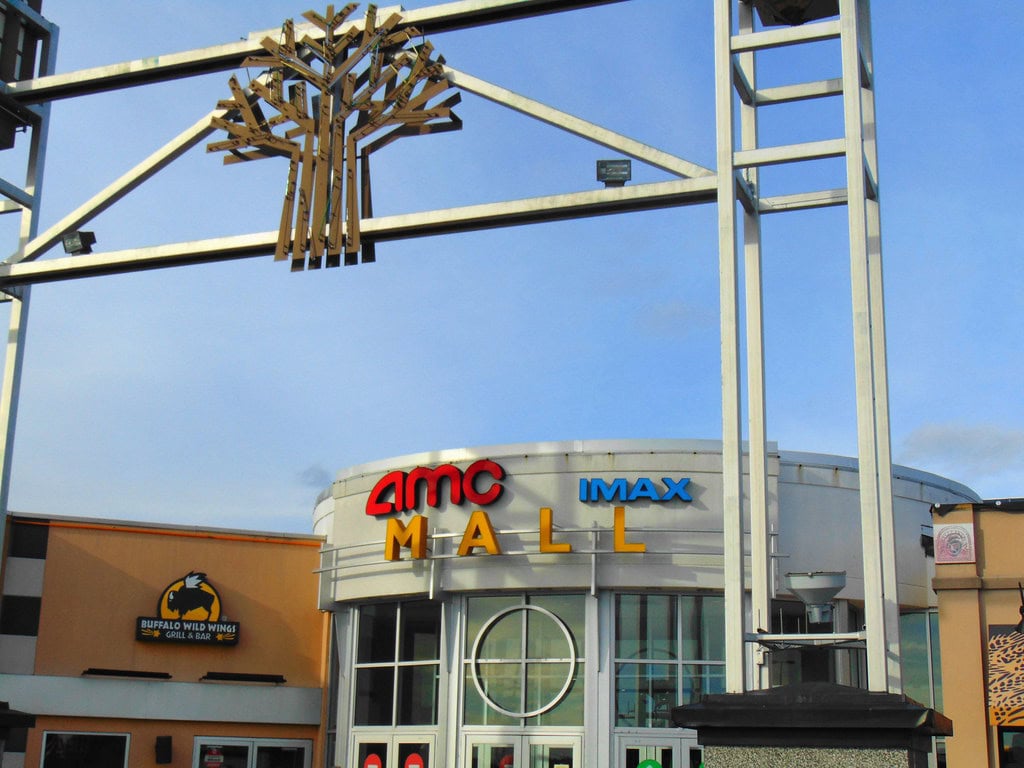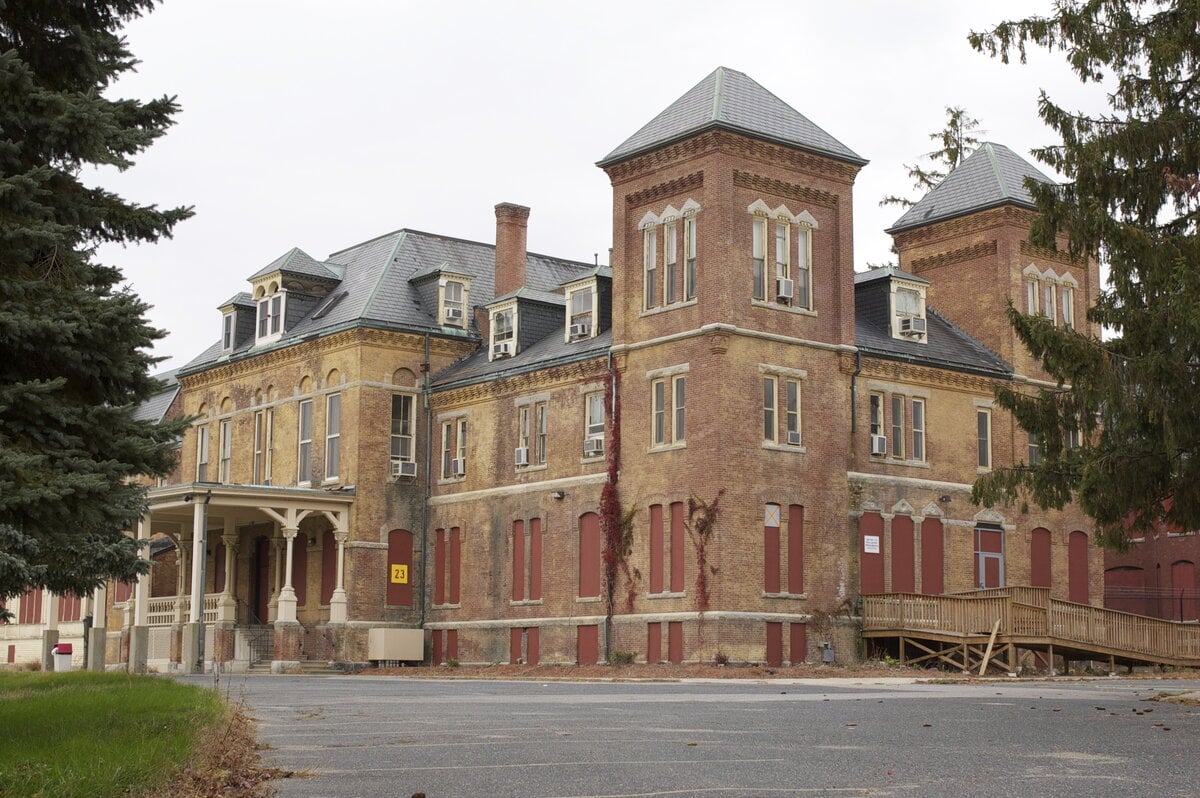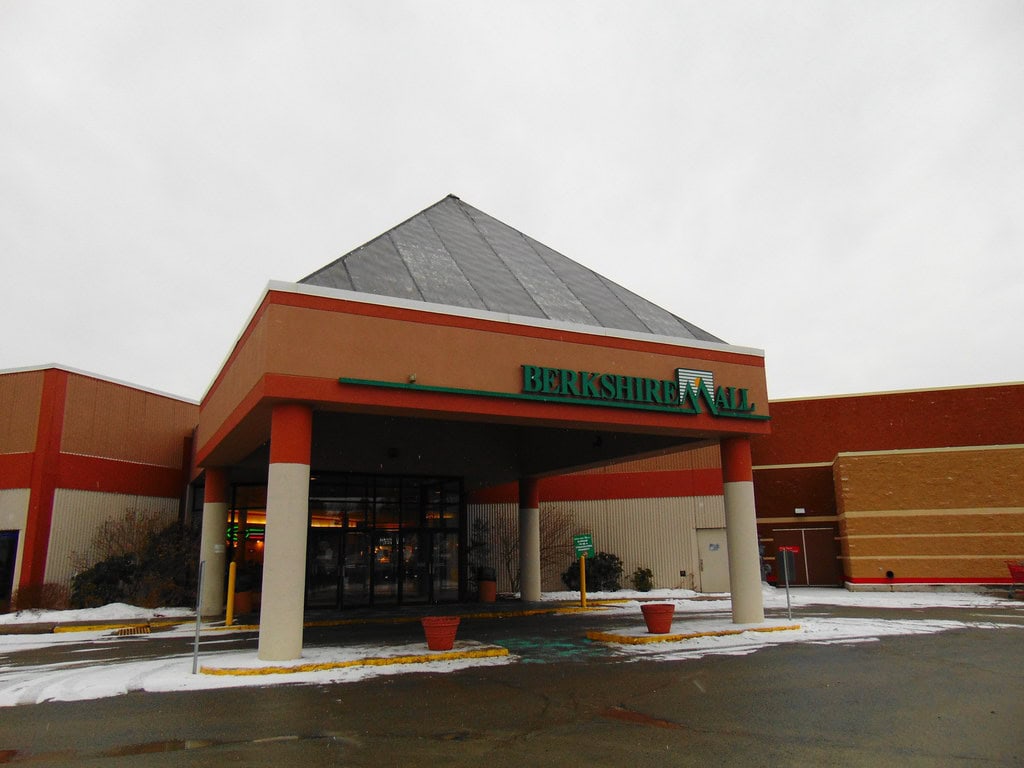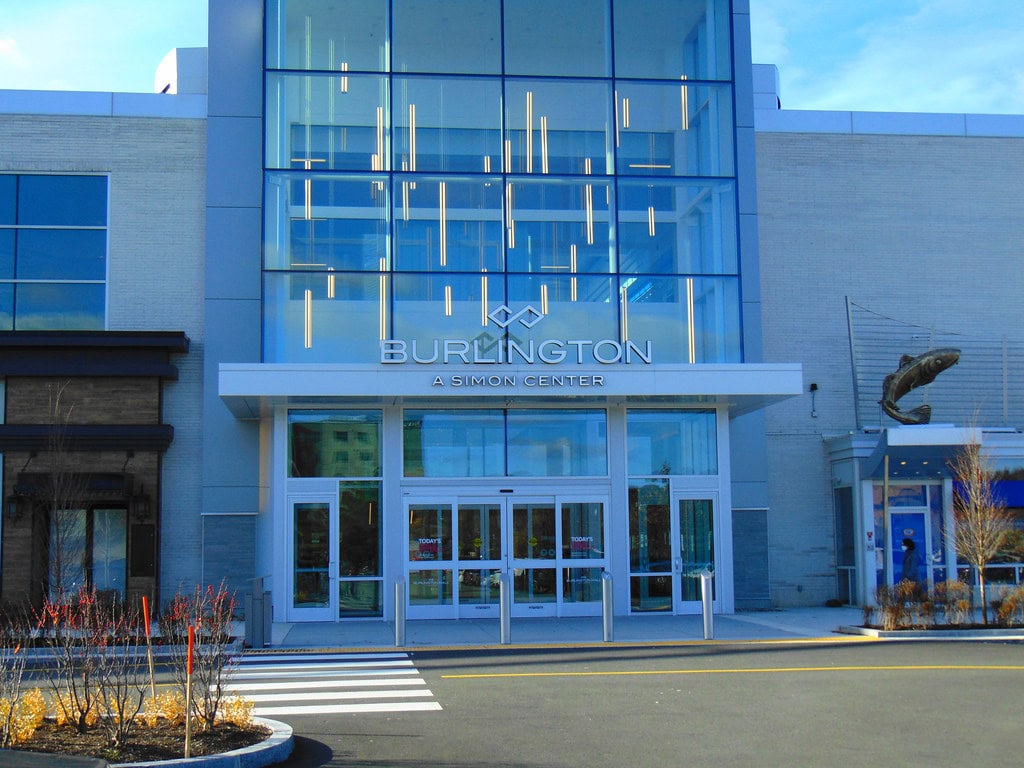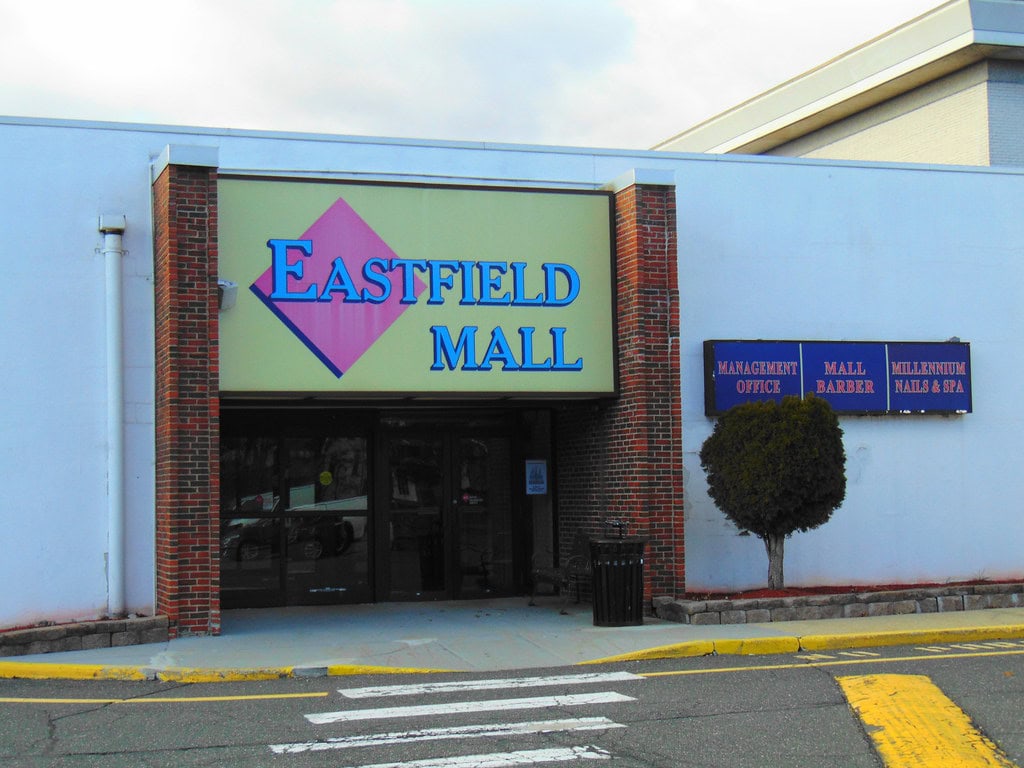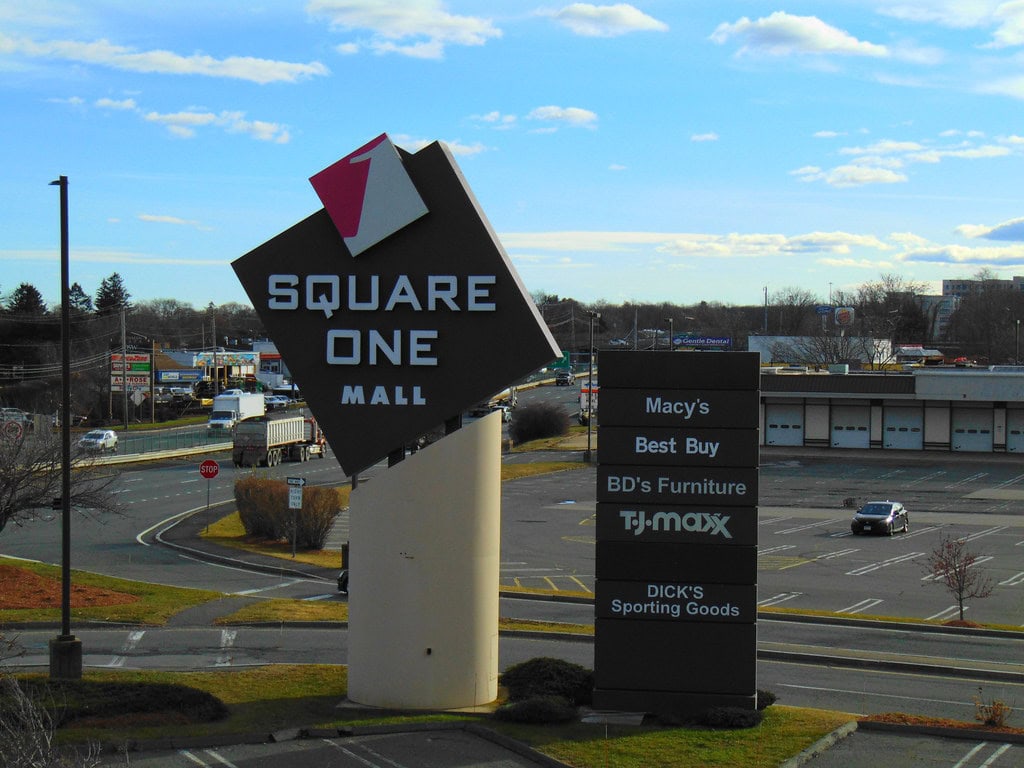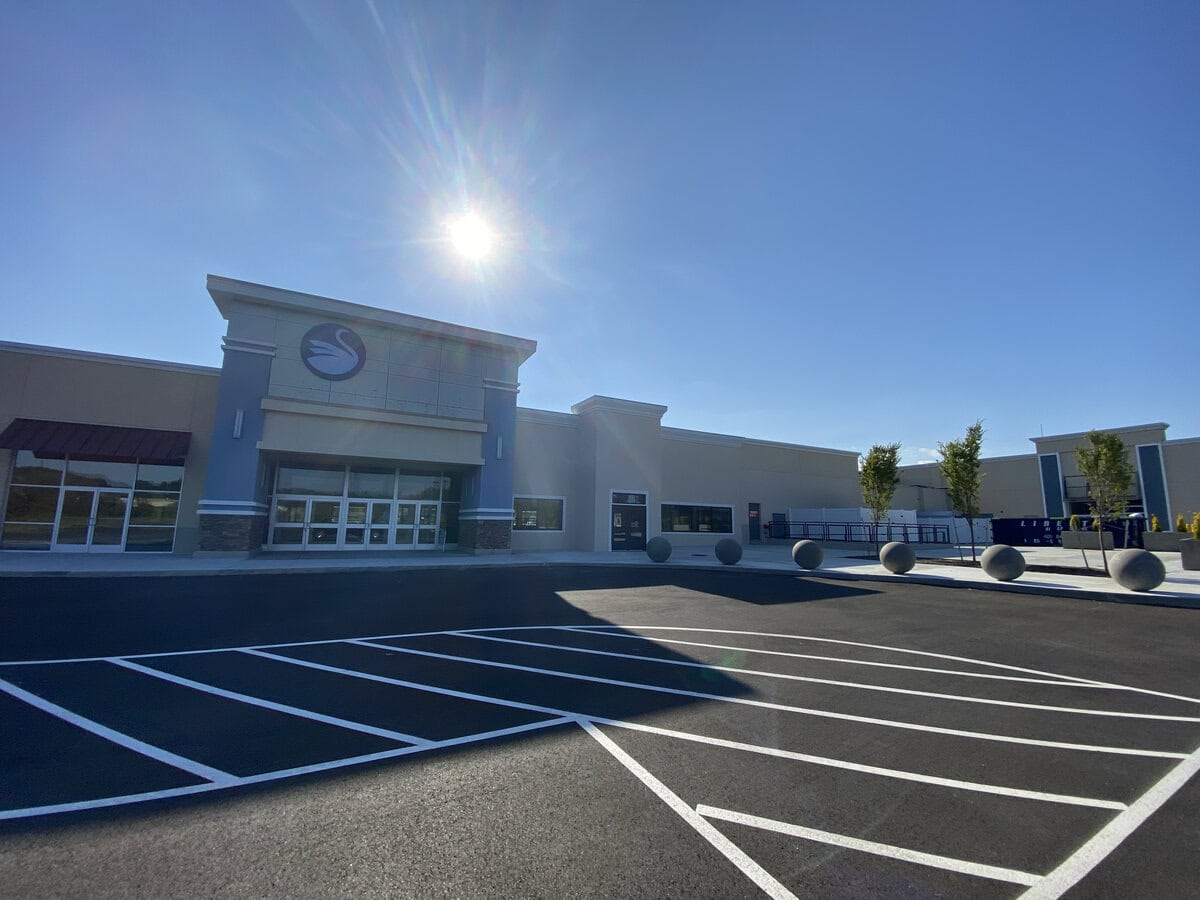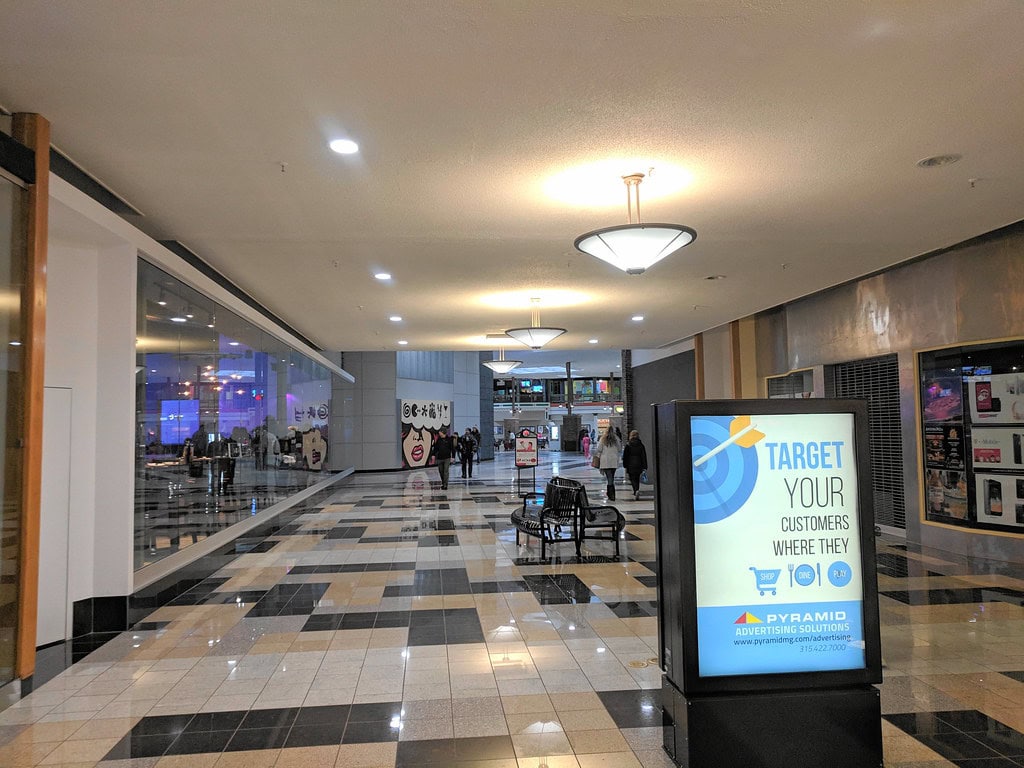The 1966 Launch of Natick Mall
The air inside the original Natick Mall carried a faint mix of popcorn, new leather, and linoleum wax. It was April 27, 1966, and Greater Boston was about to get its first enclosed shopping center - right off Route 9 in Natick, Massachusetts.
Construction had started a year earlier, in 1965, led by developers William Lane, Stephen Mugar, and John Brennan.
But the real estate puzzle behind it was a smart one: instead of building from scratch, they connected two existing retail anchors - Sears and Filene's - into a single structure that sprawled over 600,000 square feet.
That configuration, with 30 in-line stores laid out along a single level, made it one of the first enclosed malls east of the Mississippi.
Woolworth's and Pray's Furniture helped anchor the northern end. A sunken fountain near Sears gave the corridor a touch of leisure space.
That small amenity - a kind of entertainment pocket - offered a break between store clusters. It wasn't flashy, but it worked. Families lingered longer.
Tenant mix mattered. The first lineup included names like Thom McAn, Ann Taylor, Parklane Hosiery, and a Hot Shoppes Cafeteria, which later flipped to a York Steak House.
Boston Baby replaced Pray's in 1971. Then, when Boston Baby shut down in 1979, that square footage didn't sit idle - it was repurposed into a new retail wing and a four-bay food court by 1980.
By the early '80s, new storefronts like The Gap, Orange Julius, Papa Gino's, and Chess King filled the gaps. The retail footprint stayed mostly static, but the mix got trendier.
Ownership shifted by 1985. S.R. Weiner & Associates and William Finard took over, hoping to add a second level and bring in Lord & Taylor.
But the money didn't line up, and legal battles with Shopper's World's developer shut that idea down.
Still, Filene's quietly renovated its space in 1990. The work wrapped up the next year.
It was a retail core that kept drawing traffic - until modern malls elsewhere pulled shoppers away.
Still, for awhile, this was the pulse of things to do in Boston, Massachusetts.
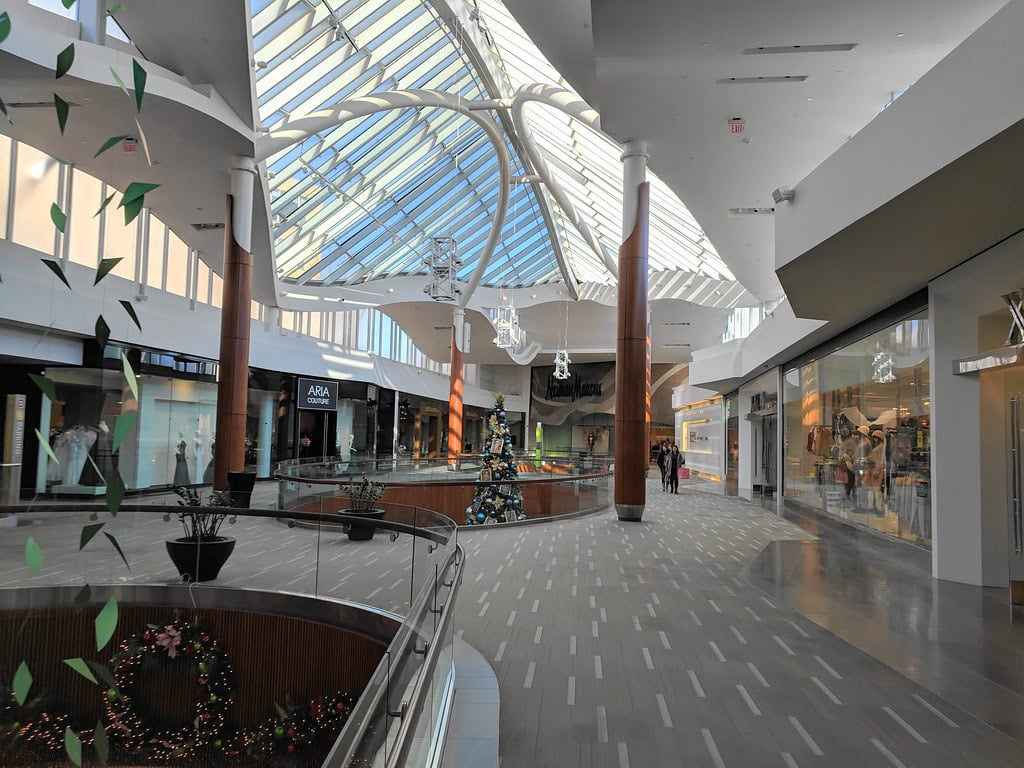
Demolition, Leasing Strategy, and the 1994 Rebuild
By the early '90s, the Natick Mall had started to feel dated. Shoppers were heading to newer, larger properties with more variety. The single-level layout, once a strength, became a constraint.
In 1992, Homart Development Company - then still a Sears subsidiary - stepped in with a redevelopment play that rewrote the site's retail future.
Their first idea? Flip the mall into a power center and turn Shopper's World into a full-scale enclosed mall.
But Filene's had just invested in a remodel in 1990 and wasn't eager to shift to a different property.
So, the plans were reversed. The old Natick Mall would come down - except for Filene's - and a new, multi-level center would take its place.
Demolition started in June 1993. Over the next year, nearly everything but Filene's was razed. The structure that rose in its place featured two levels, a new floor plan, and updated materials.
Its opening date landed on October 12, 1994, a few months behind the original August target.
The new anchor lineup featured Filene's, Jordan Marsh, Sears, and Lord & Taylor.
Macy's entered the picture two years later. Federated Department Stores, which had purchased Jordan Marsh in 1994, replaced that banner with Macy's by 1996.
This reshuffle played into a larger consolidation wave that was sweeping department stores nationwide.
The mall's valuation reflected this upswing. In December 1995, General Growth Properties acquired Homart and, with it, the Natick Mall.
At the time, the property was valued at $265 million. Ownership had shifted again, but the mall was back in business, rebuilt, and realigned for new leasing opportunities. Foot traffic followed.
Expansion Projects, Anchor Targets, and the Natick Collection Shift
The next wave started in 2006. This wasn't just a remodel - it was a repositioning.
GGP rolled out a full rebranding campaign and renamed the property "Natick Collection." The name confused locals, and the town pushed back. But the signage went up anyway.
The expansion itself took shape on the mall's northeast side, on land once occupied by a Wonder Bread and Hostess factory.
It added close to 100 stores and two high-end anchors: Nordstrom and Neiman Marcus.
The first phase opened to the public on September 7, 2007. Some tenants delayed openings into early 2008.
Retailers weren't the only newcomers. The expansion also added residential space - Nouvelle at Natick, a luxury condominium project with 215 units.
Completion was expected by the summer of 2008, but final delivery stretched into the spring of 2009.
Prices started around $379,000 and climbed past $1 million. However, the timing coincided with the housing collapse.
By December 2008, only 34 units were sold or under contract. The developer turned to auction off 42 of them in September 2009, with opening bids as low as $160,000.
Retail development kept going. In April 2008, work began on a new Crate & Barrel, a relocated California Pizza Kitchen, and an American Girl Boutique and Bistro.
Crate & Barrel's new one-level, 30,000-square-foot store opened with a two-story facade - three times larger than its original footprint.
A third phase introduced The Promenade at Natick Collection, a southwestern outdoor wing along Route 9.
Cheesecake Factory joined shortly after. Meanwhile, a fourth phase proposed a luxury hotel next to the new wing. Site prep began in 2008, but no opening date ever materialized.
The mall now ranks as the largest in New England and the twenty-third largest in the country.
But high-end growth came at a cost. By 2009, retail momentum slowed. Expansion plans collided with the recession. Leasing stalled. Sales softened. The Collection brand lingered.
Retail Mix, Tenant Turnover, and Anchor Transitions (2010-2025)
By mid-2011, the mall's branding had come full circle. After four years as the Natick Collection, it dropped the name and returned to Natick Mall.
This move toward familiarity occurred during a stretch when retail was anything but stable.
In 2015, JCPenney announced it would close. The chain had opened in 2007 in the former Jordan Marsh/Macy's space.
This time, it wouldn't be replaced by another department store. Instead, Wegmans moved in - part of a trend toward nontraditional anchors.
It opened on April 29, 2018, with multiple levels, internal mall entrances, and a full-service restaurant.
The location was the first of its kind for Wegmans.
That same year, Wayfair tested the waters with a holiday-season pop-up from November 10 through January 2.
The e-commerce brand's brief physical appearance signaled a hybrid approach - brands testing brick-and-mortar without long-term leases.
The mall saw more movement in 2020. On August 27, Lord & Taylor confirmed plans to exit all of its stores and shift to digital, leaving its Natick Mall location vacant.
Less than a month later, on September 20, Neiman Marcus announced it would also close its Natick site, with a timeline set through 2022.
Brookfield Properties, the mall's owner, responded with a pivot. In January 2022, they partnered with Bulfinch Companies to acquire the former Neiman Marcus space for $12.6 million.
The plan was to redevelop the structure into a three-story mixed-use facility with lab, office, and medical tenants. That proposal included terraces, a penthouse, and green roof features.
Shopper's Find replaced Lord & Taylor in 2021 but exited in November 2022. Around the same time, Lucid Motors confirmed it would open a showroom by September 2022.
Puttshack followed in December with plans for a two-level, 22,000-square-foot indoor mini-golf facility. The opening was set for late 2023.
Wegmans didn't last. It closed permanently on July 22, 2023.
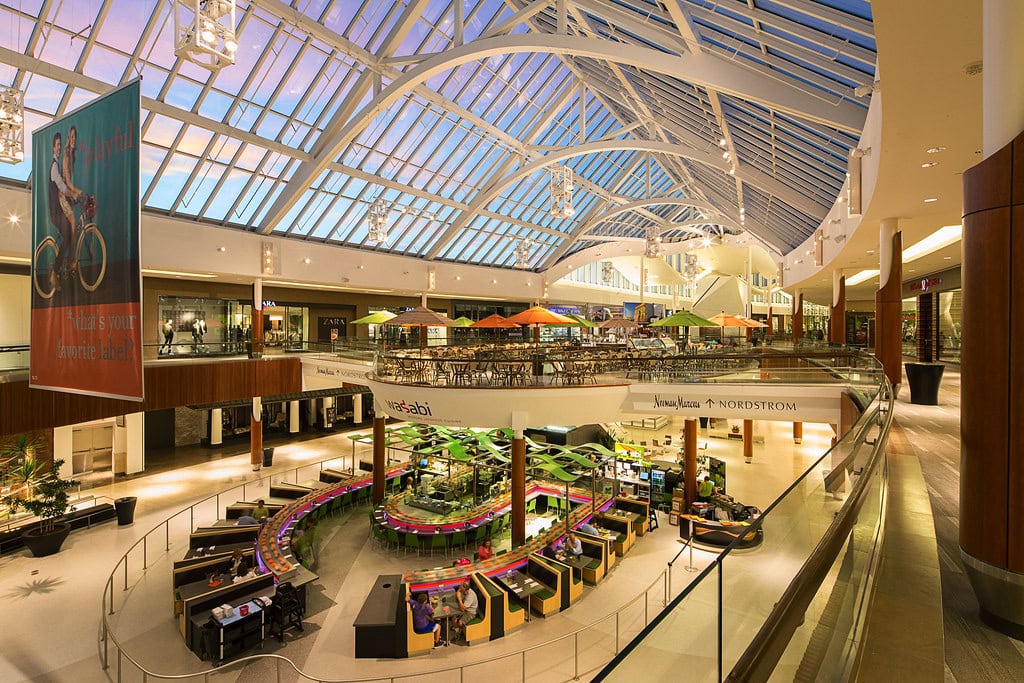
Development Pivots, Experiential Anchors, and Mixed-Use Leasing
Since 2020, the retail strategy inside Natick Mall has leaned toward hybrid experiences and flexible use.
In June 2020, Level99 announced its plan to build an immersive 48,000-square-foot venue inside the mall.
The concept paired a taproom, communal beer hall, and interactive gaming zones with an art-driven scavenger hunt and multiple themed challenge rooms.
The company opened in 2021. With support from financial backers tied to Panera Bread and Au Bon Pain, it had both funding and an audience.
Lucid Motors joined the lineup in January 2022 with a luxury EV showroom. The store opened that fall, becoming one of a few branded electric vehicle spaces located inside regional malls.
Other experiential entries include Puttshack, which opened in late 2023. The two-level, 22,000-square-foot venue features three tech-enabled nine-hole mini-golf courses.
Its ball-tracking system replaces traditional scorecards, making the game fully automated.
The location also includes a full bar and food service, adding to the mall's entertainment-heavy strategy.
D.J. Bosse made headlines in October 2023 when the mall announced a new collaboration: a pickleball facility set to rise inside the former Neiman Marcus footprint.
The fitness operator was already known in the area for upscale gym facilities. With the new Bosse pickledom, Brookfield aimed to shift foot traffic toward sport and leisure.
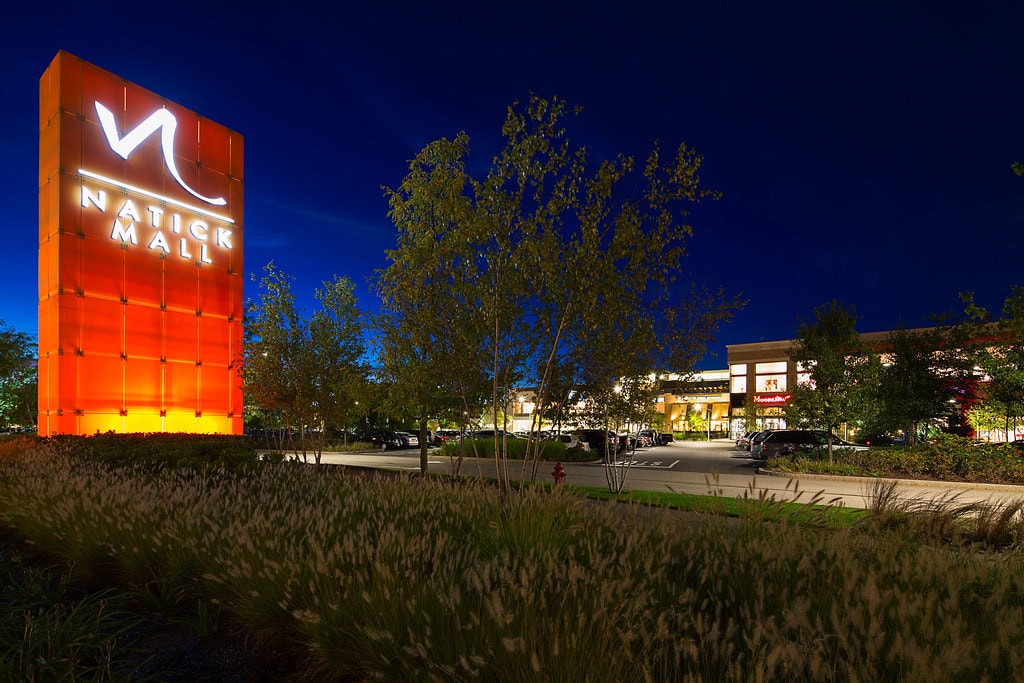
The music echoes - low, steady bass layered with the sound of sneakers squeaking across a polished court.
Neon glows from the bar, and to the right, someone's yelling over a missed game.
It's not a mall in the old sense. This is the new Bosse Sports Lounge, inside what used to be Neiman Marcus.
DraftKings helped build this. In a 2024 partnership, the betting giant joined forces with Bosse to rework the space into something louder, more physical, and more interactive.
The video wall alone, 12 by 19 feet, loops live sports feeds with betting stats laid across the screen.
Patrons - mostly over 21 - swap between pickleball matches and darts, sometimes breaking for the golf simulator tucked behind the bar.
Down the corridor, December brought two newcomers. On one side, Hot Doogy serves Brazilian-style hot dogs loaded with cheese, corn, and crispy potatoes - sometimes all three.
The soft opening was on December 14. Kendra Scott's store came first, a day earlier. Inside, light bounces off display cases of jewelry and perfume.
Customers hover at the Color Bar, rearranging gemstones until the layout feels right.
Meanwhile, outside the Tesla store, protesters stood in rows. It was March, 2025.
They weren't here about shopping - they came with signs, waving them outside Natick Mall, calling out Elon Musk's ties to federal politics.
The escalators still hum, but the story isn't about retail anymore. It's about motion - who's arriving, who's leaving, and what gets built in the space between.

